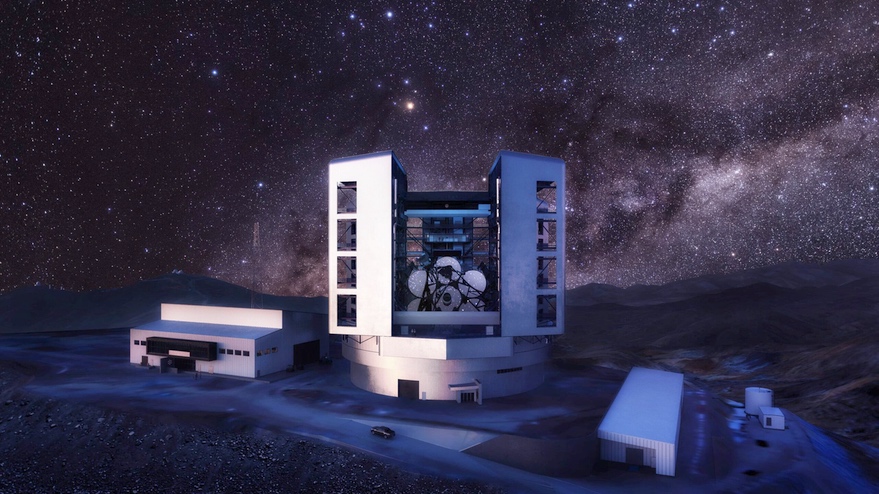Products You May Like
WASHINGTON — Five senators are asking the White House to add at least $300 million in the next budget proposal for NASA and the National Science Foundation (NSF) to support priorities from the astrophysics decadal survey.
The Dec. 21 letter, released Jan. 5 by one of the signatories, Sen. Ben Ray Luján (D-N.M.), asked the directors of the Office of Management and Budget and the Office of Science and Technology Policy to include “specific, increased funding” for NASA and NSF astrophysics programs in the fiscal year 2024 budget request under development. That budget is will be released as soon as early February.
The senators asked for at least $150 million in additional funding for NSF astronomical sciences to support design work for new observatories. They also asked for $150 million for NASA astrophysics to fund technology development for future space telescopes.
The additional funding, the senators said, is needed to implement recommendations of the astrophysics decadal survey, known as Astro2020, published in November 2021. That report recommended NASA pursue a technology maturation program for a series of flagship space telescope missions, starting with a large ultraviolet, visible and infrared telescope. It also backed NSF support for two large ground-based telescopes, the Giant Magellan Telescope (GMT) and Thirty Meter Telescope (TMT), along with the Next Generation Very Large Array (ngVLT) radio observatory.
The senators argued that the additional funding will help keep the United States the “global leader” in astronomy amid competition from other countries. “Astro2020 prioritizes investment to enable and realize major observatories, priorities that will maintain and strengthen our Nation’s leadership over our adversaries and competitors in this vital area of science,” they wrote.
Joining Luján in signing the letter are Sens. Chris Van Hollen (D-Md.), Brian Schatz (D-Hawaii), Ben Cardin (D-Md.) and Martin Heinrich (D-N.M.) Maryland hosts NASA’s Goddard Space Flight Center and the Space Telescope Science Institute, which would play key roles in future space telescope development. New Mexico is home to the Very Large Array and would host the core of the ngVLA. Hawaii’s Maunakea is the proposed home for TMT, although protests and legal disputes have held up construction.
The fiscal year 2024 budget requests for NASA and NSF will be the first fully informed by Astro2020. By the time the final report was released in November 2021, work on the fiscal year 2023 budget proposals was already well underway for release in early 2022, with only limited ability to incorporate recommendations from the report. NASA, for example, requested terminating funding for the SOFIA airborne observatory in its fiscal year 2023 proposal, citing a recommendation to do so in Astro2020.
Both agencies are taking steps to implement the recommendations of Astro2020 within existing budgets and programs. At a Dec. 2 meeting of the Committee on Astronomy and Astrophysics of the National Academies’ Space Studies Board, Mark Clampin, director of NASA’s astrophysics division, said the agency was formulating a Great Observatories Technology and Maturation Program, or GOMAP, as recommended by Astro2020.
“I’m taking a very deliberate, strategic approach to how we do this next large flagship mission,” the large ultraviolet-visible-infrared telescope, he said, which has the current working name of the Habitable Worlds Observatory. “We are currently working on a plan to implement GOMAP, the mission and technology maturation program, and also how we do this observatory.”
Clampin didn’t go into details about either GOMAP or Habitable Worlds Observatory at the meeting, beyond saying the focus of the observatory “from day one” will be on schedule and its science goals. He said he would provide more details about those plans at a meeting of the American Astronomical Society in Seattle Jan. 8-12.
At the same committee meeting Dec. 1, Debra Fischer, division director for astronomy at NSF, said her agency was still examining how to implement the Astro2020 recommendations, particular for the large observatories it recommended. Because those discussions were ongoing at the time, she said she could not discuss details about those plans.
“Navigating these projects, because they are so expensive, to me feels like taking a very large ship and navigating it through a very narrow channel where we really don’t know if the water is deep enough,” she said. “For all of these projects, there are probably a hundred reasons why they might fail at some point. I’m going to make sure that it’s nothing that happens in the astronomy division that slows them down.”
